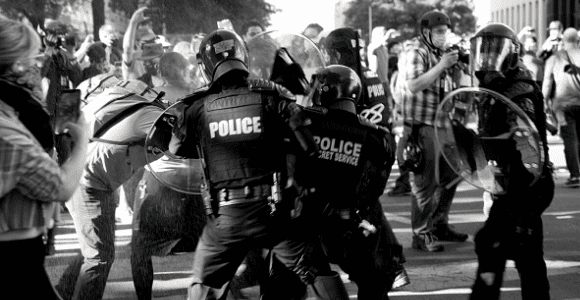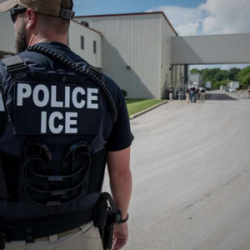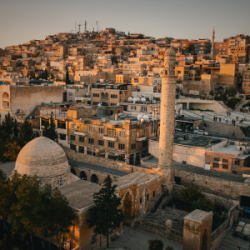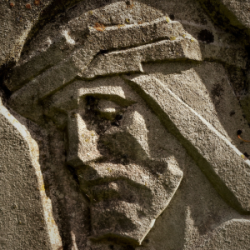Welcome readers! Please subscribe through the buttons on the right if you enjoy this post.
(Read this series from its beginning here.)

Again, what we have here is two paths toward peace. One was enforced by militarized power and the other addressed the root causes of injustice that lead to the lack of peace.
One approach toward peace is imposed, and the other is a more organic approach to social causes and effects. When Jerusalem came into view, Jesus stopped and wept: “If you, even you, had only known on this day what would bring you PEACE—but now it is hidden from your eyes” (Luke 19:42–44, emphasis added).
This calls to mind what we are seeing take place in our society presently. The protests are a call for justice that has long gone unheard. Yet Trump is responding, not by listening to the underlying systemic causes and working to address these injustices, but by simply threatening greater force. We have an overfunded, militarized police force and as a country, we spend twice as much on law and order as we do on social welfare.
It is in a context like this that Luke’s Jesus addresses those weeping for him on the way to his execution. Rome executes Jesus because of his economic protest in the temple and his growing number of followers among the disinherited, dispossessed, and disenfranchised.
“Daughters of Jerusalem, do not weep for me; weep for yourselves and for your children…For if they do these things when the tree is green, what will happen when it is dry?”’ (Luke 23:28–30)
Again, many scholars believe Luke’s gospel was written after the fall of Jerusalem in 70 C.E. Luke connects Jesus’ economic teachings about distributive justice, the economic elites’ rejection of those teachings, and the Jewish poor people’s revolt in the late 60s. As I’ve shared in previous weeks, the poor people’s revolt grew into the Roman Jewish war (66-69 C.E.), which resulted in Rome’s violent leveling of Jerusalem in 70 C.E. Luke’s gospel tries to make sense of the devastation of 70 C.E. Christianity has a long, anti-Semitic history of explaining Jerusalem’s destruction as God’s punishment of the city for rejecting Jesus. I don’t believe that. Instead, I see the gospel authors connecting rejection of Jesus’ economic teachings of wealth redistribution and resource-sharing with what later happened in Judea, Galilee, and Samaria. They are making a more organic, intrinsic connection between a society that rejected economic distributive justice and restructuring their community to prioritize the poor on the one hand and the poor people’s uprising and revolt on the other. The results are not divinely imposed or arbitrary. They are the natural outcome of political, economic, and social causes and effects.
This helps us understand the words, “if they do these things when the tree is green, what will happen when it is dry?” If Rome responds to Jesus’ minor protest and demonstration in the temple with such violence as a crucifixion, what will Rome do when it’s facing an entire poor people’s revolt and an all-out class war (i.e. the Jewish-Roman War, 66-69, and the destruction of Jerusalem in 70 C.E.)?
Luke’s Jesus quotes the prophet Hosea, who centuries before had spoken those words about the way Israel would be destroyed by Assyria. “The high places of wickedness will be destroyed—it is the sin of Israel. Thorns and thistles will grow up and cover their altars. Then they will say to the mountains, ‘Cover us!’ and to the hills, ‘Fall on us!’ . . .” (Hosea 10.8-10) Luke applied Hosea’s words to how Jerusalem would be destroyed by Rome.
“As the legions charged in [the Temple], neither persuasion nor threat could check their impetuosity: passion alone was in command . . . Most of the victims were peaceful citizens, weak and unarmed, butchered wherever they were caught. Round the Altar, the heap of corpses grew higher and higher, while down the Sanctuary steps poured a river of blood and the bodies of those killed at the top slithered to the bottom . . . Next [the Romans] came to the last surviving colonnade of the outer court. On this women and children and a mixed crowd of citizens had found a refuge—6000 in all. Before Caesar could reach a decision about them or instruct his officers, the soldiers, carried away by their fury, fired the colonnade from below; as a result, some flung themselves out of the flames to their death, others perished in the blaze: of that vast number there escaped not one.” Josephus, The Jewish War, Williamson and Smallwood, p. 359 (6.5.1; 271–76)
This is where the path of systemic injustice pressed down too long by militarized force ultimately ends. People finally have enough. When the dust settles, there is either change or massive destruction as social unrest is once again quelled, and social change is once again pushed further down the line for a future revolt.
We’ll discuss how this applies to our context, today, next.













